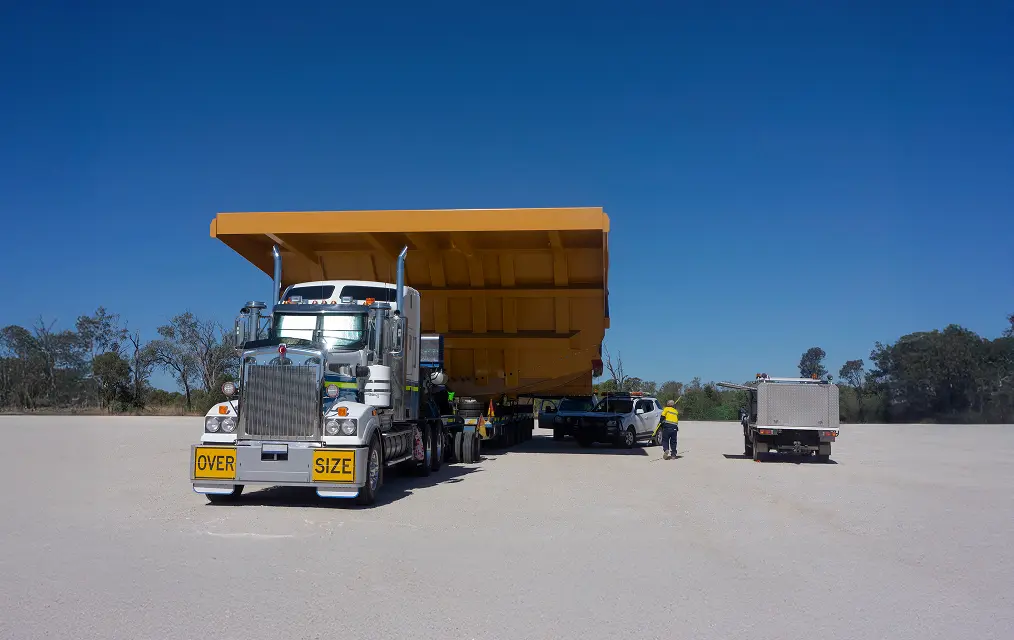The Process and Logistics Behind the Transportation of Oversized Cargo

Transporting oversized cargo goes far beyond standard freight services. Behind the scenes are technical, regulatory, and safety challenges, each demanding specialized solutions. Shipments, including massive industrial machinery, construction equipment, and enormous structures that defy regular trailer dimensions, require careful preparation before the truck can hit the road.
Assessment and Planning
Before any oversized shipment can move, a thorough assessment and planning phase takes place. Logistics professionals verify the cargo’s exact dimensions and weight, confirming that it indeed exceeds standard shipping limits. They also conduct a route analysis, examining potential obstacles such as narrow roads, low overpasses, or weight-restricted bridges. These help determine whether detours or specialized equipment might be required for safe transit.
When the analysis is done, the carrier requests a special permit, often imposing unique regulations and guidelines. It builds a solid foundation for the entire transportation process, laying the groundwork for a smooth, efficient journey.
Equipment Selection
The nature of oversized cargo may call for specific equipment to be moved safely. Thus, flatbed trailers are often used for moderately oversized shipments, providing ample space and easy loading from multiple angles. When freight exceeds standard height limits, step-deck trailers come into play, thanks to their lower deck design that can accommodate taller loads without violating regulations. For extremely heavy or tall cargo like massive machinery, lowboy trailers provide a solution with their dropped deck height and robust build.
In cases where cargo surpasses standard trailer lengths, carriers rely on extendable trailers. Some operations may also require specialized attachments, such as lift axles or hydraulic systems, to help distribute weight and maintain stability. Every choice revolves around protecting the integrity of the shipment and ensuring compliance with local guidelines.
Securing the Cargo
No matter how well the equipment is chosen, improper cargo securing can undo all the planning that goes into an oversized shipment. Heavy-duty straps and chains are the first line of defense, preventing the load from shifting, rolling, or toppling while in transit. Protective coverings may also be placed over sensitive machinery or fragile components, shielding them from rain, dust, and other environmental factors.
Weight distribution is equally crucial. If the freight is loaded improperly, even slight imbalances can lead to accidents on the road. Transport teams secure each section of the trailer and the load to reduce strain on tires and axles and strengthen the overall vehicle structure. They thoroughly inspect the load at various checkpoints, including before, during, and after transit. Taken together, these measures guarantee that oversized cargo arrives intact and that each trip remains free of preventable incidents.
Regulatory Compliance
Successfully transporting oversized cargo hinges on thorough permitting and regulatory compliance. Each jurisdiction, whether municipal, state, or federal, enforces specific rules to protect local infrastructure and maintain public safety. Oversize load permits spell out critical details such as the allowed travel routes, load dimensions, and potential restrictions on travel times. In many cases, these requirements also dictate the need for escort vehicles, especially if the shipment significantly exceeds width or height limits.
Authorities sometimes restrict travel to daylight hours or off-peak traffic periods to minimize congestion and reduce the likelihood of accidents. This can extend the project timeline, so close coordination between freight coordinators and permitting offices is essential. Failing to secure the correct permits can lead to hefty fines, shipment delays, or even confiscation of the load. The carrier must understand each region’s regulations, sidestep unnecessary complications, and ensure that every aspect of the journey meets legal standards.
Route Surveys and Pre-Planning
Before the first mile is traveled, the carrier must thoroughly examine every segment of the chosen path. This analysis includes verifying bridge heights, checking underpasses for clearance, and assessing roads for weight restrictions. These factors influence whether the main route is feasible or if detours are needed to circumvent areas that cannot accommodate the freight.
Weather patterns also play a significant role in route planning. Heavy rain, high winds, or freezing temperatures can make certain roads treacherous or temporarily impassable. By monitoring local forecasts, teams can adjust delivery schedules to minimize travel risks and keep shipments moving safely.
Another key consideration is traffic flow and congestion, as navigating oversized loads through peak rush hours can create substantial delays and potential hazards. Through diligent research, mapping, and communication with local authorities, route surveys reduce unpredictability and support efficient execution. With backup plans and contingency strategies on hand, logistics providers prepare themselves for unexpected challenges, ensuring that oversized cargo reaches its destination safely and on schedule.
Execution of Transport
Once the route is confirmed and permits are in place, the execution phase begins. It starts with selecting an experienced driver who understands the challenges of oversized freight and can handle the vehicle with skill and precision. In many cases, a convoy of escort or pilot vehicles accompanies the main truck to manage traffic, guide lane changes, and ensure safety around tight curves or narrow passages.
Real-time tracking adds another layer of control, allowing logistics teams to monitor the shipment’s progress, anticipate potential delays, and adjust the route if necessary. This technology also offers clients valuable visibility, providing updates on delivery timelines and helping them plan for labor or equipment needs upon arrival. Throughout the journey, scheduled checkpoints and inspections confirm that the cargo remains secure and that any shifting or equipment issues are quickly resolved.
Conclusion
Transporting oversized cargo is a carefully choreographed process that demands specialized expertise at every turn. From assessing dimensions and planning routes to selecting the right equipment and executing the haul, each phase builds on the last to ensure a safe and efficient journey. Compliance with permit requirements, adherence to regulations, and ongoing communication with stakeholders further underscore the complexity involved. Ultimately, a successful oversized shipment hinges on coordinating skilled teams, thorough planning, and robust safety measures. Only by bringing all of these elements together can logistics providers deliver massive and unconventional freight to their destinations with confidence and precision.
